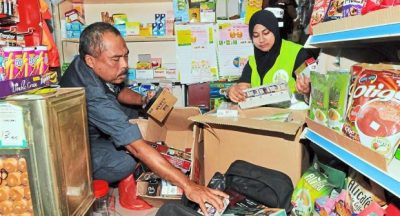
Happy World Anti-Counterfeiting Day 2019!
With 70% of counterfeit goods reportedly sold online, and 68% of people now reported to have unintentionally bought fake goods online, it’s difficult to imagine how our counterfeit problem could get any worse.
White papers from the Union des Fabricants and co-published by the Center for Anti-Counterfeiting and Product Protection and Mark Monitor remind us that fake goods are not only putting us out of pocket, but they are placing us in a greater danger than may have initially been thought. The fakes we buy are funding serious criminal activity, including terrorism, modern slavery and other organised crimes, not to mention the immediate health and safety issues of fake pharmaceuticals and electricals.
What does this mean for your brand?
These studies serve to further underscore why it is not just important, but imperative that we tackle counterfeits in a meaningful way. One report notes that 85% of consumers believe that brands need to be doing more to protect customers from making counterfeit purchases online. Brands are less likely to be trusted – and therefore more likely to lose potential customers and sales – if the brand is not seen to be actively working to resolve any online counterfeiting issues.
Brand owners need to create an effective and sustained anti-counterfeiting strategy tailored to their brand, industry and consumer purchasing habits. A combination of the right IP protection, customs recordals, online content monitoring and an established enforcement/escalation strategy can prove a successful blueprint in combatting counterfeits.
A brand enforcement strategy that identifies types of issues and priorities is the key starting point. Undertaking manual and piecemeal enforcement activity (either physical or digital) prevents matters being prioritised properly and dealt with holistically, and is a drain on resources.
A number of software platform providers offer online content monitoring, enabling bulk enforcement across different mechanisms such as eBay and Twitter. These platforms are useful in reducing the level of noise around the brand, but these alone can simply create a whack-a-mole scenario of sellers being removed, only to pop up again via new credentials or with altered selling practices. What is required in addition to this is the continued collation and review of the intelligence generated. That can then be fed into an escalation policy which can be implemented by a brand and their legal advisors to address issues that are so heinous at the outset or recurrent to warrant more bespoke action such as investigations, litigation, or collaboration with law enforcement.
https://www.iamstobbs.com/opinion/happy-world-anti-counterfeiting-day-2019
Related Posts
Coronavirus scare: Fake hand sanitizer plant busted in J&K
Drug Control Department of Jammu and Kashmir has ceased "fake" hand sanitizers,...
Lafayette Hill man charged for smuggling goods into U.S., pirating movies, TV shows
A Lafayette Hill man has been charged by indictment for smuggling goods into the...
Illegal ciggies seized during raid on sundry shops
Customs officers have seized 2,000 sticks of smuggled Tex cigarettes from a...
Police seize fake products worth 15L
Pune: A team of the Pimpri Chinchwad crime branch, led by senior inspector...




